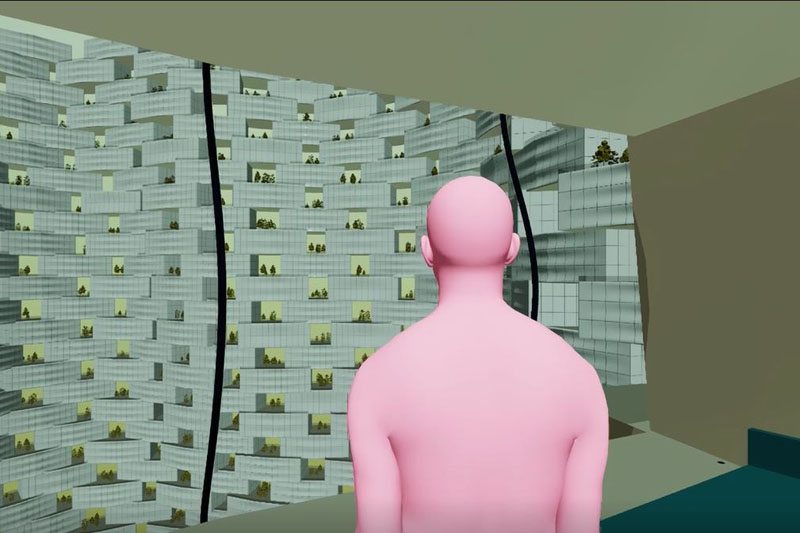Siyu Tang's work on display at the Guggenheim Museum Bilbao
"Flight Assembled Architecture" is a futuristic pedestrian city originally conceived by Fabio Gramazio and Matthias Kohler as an interdisciplinary project with Raffaello D’Andrea in 2012. For the "revisited" edition that can now be seen at Guggenheim Museum, Siyu Tang created virtual human beings that inhabit the structure.

Work by Siyu Tang, a member of ETH AI Center's core faculty, is currently on display as a part of the “Motion. Autos, Art, Architecture”-exhibition curated by Norman Foster at the Guggenheim Museum Bilbao.
The exhibition, which opened on April 8th and runs through mid-September, explores how technology and art are interwoven in the creation and design of automobiles. Consider, for example, how the use of the wind tunnel shaped both form and function of the automobile, designing it to move faster while using less power to do so.
The installation “Flight Assembled Architecture Revisited. Inhabiting the Virtual" shows a Six-hundred-meter-high pedestrian ideal city for 30’000 inhabitants, first conceived by Matthias Kohler and Fabio Gramazio with Raffaello D’Andrea in 2012. Its meta-structure would be erected, continuously reconfigured and, at the end of its lifetime, dismantled by autonomous flying drones. Visitors to the exhibition can observe the ideal city from a distance or from a first-person perspective inside a fully rendered utopia, or inspect a 6m high 1:100 scale city model.
Siyu Tang from the Computer Vision and Learning Group at ETH Zürich as well as the ETH AI Center contributed to the updated version of the virtual ideal city by populating it with autonomous virtual humans, each of them with their own, unique artificial intelligence and distinctive movements within their architectural environment. Visitors thus bear witness to the life of the avatars within the city as it unfolds in real-time.